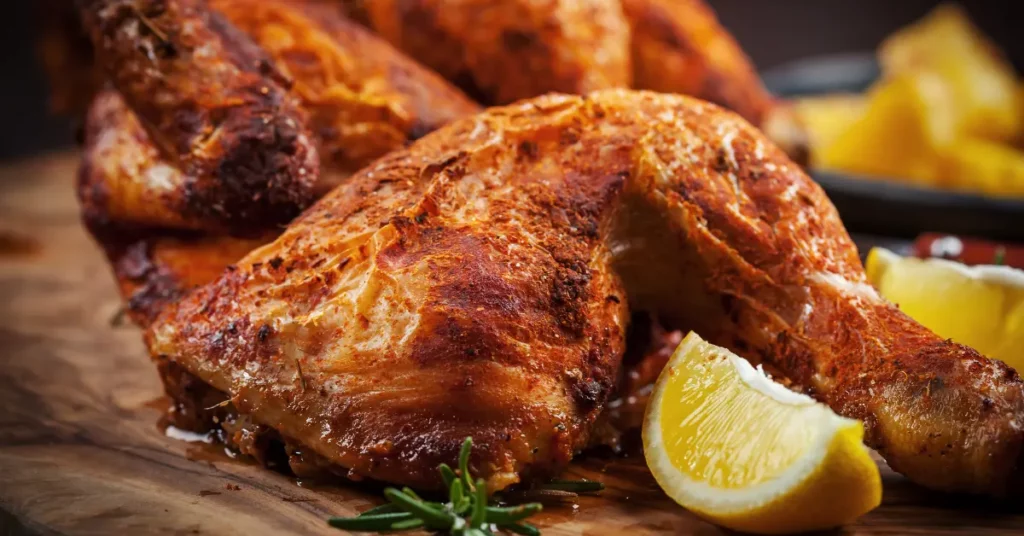This post may contain affiliate links. If you use these links to buy something we may earn a small commission. Thanks.
Grilled chicken legs are a favorite for BBQ enthusiasts and casual grillers alike. They’re juicy, flavorful, and easy to prepare, making them a go-to choice for backyard gatherings or weeknight dinners. To ensure your chicken legs turn out perfectly every time, you’ll need the right preparation, seasoning, and grilling techniques. In this guide, we’ll take you step-by-step through the process of cooking delicious chicken legs on the grill.
Choosing the Chicken Legs
The foundation of great grilled chicken legs starts with selecting high-quality meat.
- Fresh vs. Frozen: If possible, opt for fresh chicken legs for better flavor and texture. Frozen chicken legs can work well, but make sure to thaw them thoroughly in the refrigerator before grilling.
- Portion Size: Consider the number of servings you’ll need. Each person typically eats 1-2 chicken legs, so plan accordingly.
Look for chicken legs with firm, plump skin and avoid those that appear discolored or have a strong odor.
Preparing the Chicken Legs
Proper preparation is essential for juicy and flavorful chicken legs. Here’s how to get started:
- Cleaning: Rinse the chicken legs under cold water and pat them dry with paper towels. Removing excess moisture helps the seasoning adhere better and promotes even cooking.
- Trimming: Trim off any excess fat or loose pieces of skin that might burn on the grill.

Marinating or Seasoning:
- Marinades: Marinating is an excellent way to infuse the chicken with flavor. Popular marinades include:
- BBQ sauce combined with garlic and onion powder.
- Lemon juice, olive oil, garlic, and herbs for a fresh and zesty flavor.
- Spicy options like sriracha or chili paste mixed with honey.
- Dry Rubs: If you’re short on time, a dry rub works well. Common ingredients include salt, pepper, paprika, garlic powder, and cayenne pepper.
Resting Time: Allow the chicken legs to marinate or sit with the rub for at least 30 minutes. For the best results, refrigerate them overnight to let the flavors penetrate deeply.
Prepping the Grill
The grill setup plays a critical role in achieving perfectly cooked chicken legs.
- Choose Your Grill: You can use a charcoal, gas, or pellet grill. Each type has its benefits:
- Charcoal grills provide a smoky flavor that’s hard to beat.
- Gas grills are convenient and easy to control.
- Pellet grills offer precise temperature control and an even smoke profile.
- Preheat the Grill: Preheat your grill to medium heat, around 350°F. This ensures even cooking and prevents sticking.
- Create Heat Zones: Set up direct and indirect heat zones. Place hot coals on one side (direct heat) and leave the other side cooler (indirect heat). For gas grills, turn one burner to medium-high and another to low.
- Clean and Oil the Grates: Use a grill brush to clean the grates and then oil them lightly with a paper towel dipped in vegetable oil. This step helps prevent sticking and ensures a clean surface for cooking.
Grilling the Chicken Legs
Now that your chicken legs and grill are ready, it’s time to cook.
- Cooking Temperature: Maintain a consistent grill temperature of around 350°F for even cooking.
- Placement: Start by placing the chicken legs on the indirect heat zone. This allows the meat to cook through without charring the skin.
- Timing: Cook the chicken legs for about 20-30 minutes, turning every 5-7 minutes to ensure even cooking. Use tongs to handle the chicken gently and avoid piercing the skin, which can release juices.
- Finishing on Direct Heat: Once the internal temperature reaches about 155°F, move the chicken legs to the direct heat zone. Sear them for 2-3 minutes per side to create a crispy, golden-brown skin.
- Internal Temperature: Use a meat thermometer to check the thickest part of the chicken legs. The internal temperature should reach 165°F for safe consumption.
Adding Finishing Touches
For an extra burst of flavor, consider basting the chicken legs with sauce during the last few minutes of cooking.
- Saucing Tips: Brush the sauce on during the final 5 minutes of grilling to prevent burning. Popular choices include classic BBQ sauce, honey mustard, or teriyaki glaze.
- Resting: After removing the chicken legs from the grill, let them rest for 5-10 minutes. This step allows the juices to redistribute, ensuring every bite is moist and flavorful.
Serving Suggestions
Grilled chicken legs pair well with a variety of sides and garnishes. Consider these options:
- Side Dishes:
- Coleslaw or potato salad for a classic BBQ pairing.
- Grilled vegetables like zucchini, bell peppers, or corn on the cob.
- A light green salad for a refreshing balance.
- Garnishes: Add a squeeze of fresh lemon or lime juice and sprinkle with chopped parsley or cilantro for a vibrant finishing touch.
Troubleshooting Common Issues
- Overcooked Chicken: If the chicken turns out dry, try marinating it longer next time or cooking it at a slightly lower temperature.
- Undercooked Chicken: Always check the internal temperature with a meat thermometer. If it’s under 165°F, return the chicken to the grill for a few more minutes.
- Burnt Skin: Keep an eye on the chicken while it’s on direct heat. Flare-ups can char the skin quickly, so move the chicken back to indirect heat if needed.
Conclusion
Grilling chicken legs is a straightforward and rewarding process when done correctly. With proper preparation, the right seasoning, and careful grilling techniques, you can create juicy, flavorful chicken legs that will be the star of your next meal. Don’t be afraid to experiment with different marinades and side dishes to keep things exciting. Now, fire up that grill and get cooking your perfect chicken legs await.
